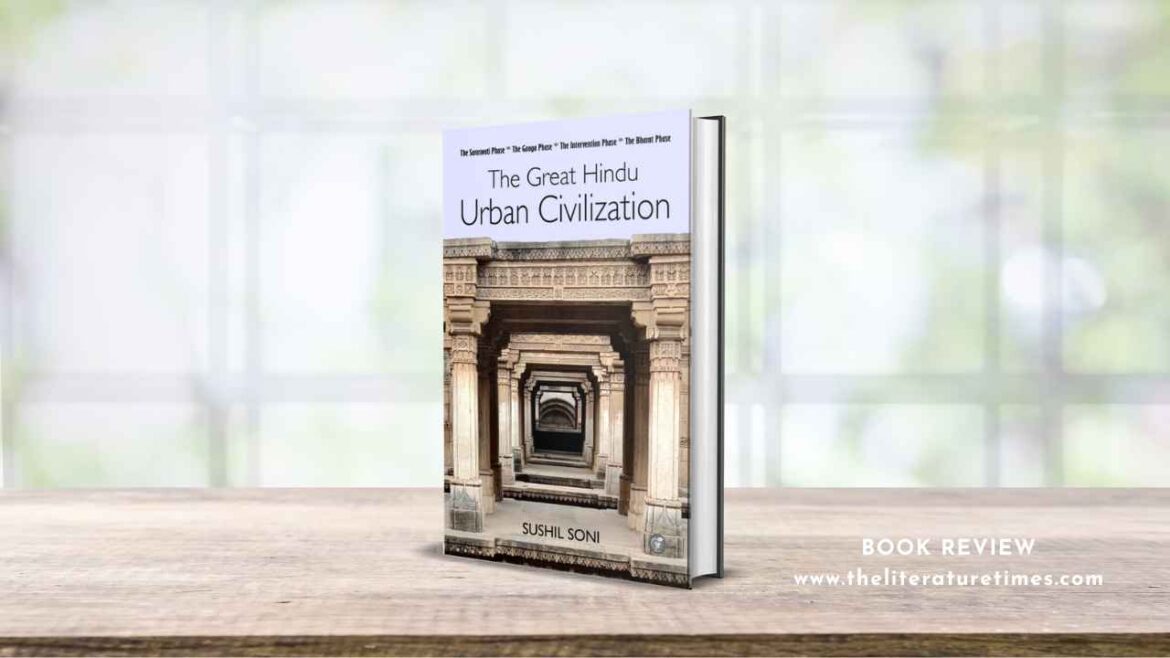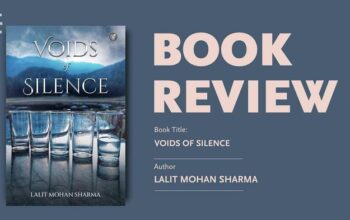In The Great Hindu Urban Civilization, Sushil Soni presents a bold, meticulously researched, and deeply thought-provoking re-evaluation of Indian history — one that firmly rejects the Eurocentric and Marxist frameworks that have dominated historical scholarship for over a century. Through a compelling mix of historical evidence, philosophical reflection, and cultural analysis, Soni argues that India’s true civilizational journey has been distorted by colonial and ideological biases and that it is time to reclaim Bharat’s authentic identity rooted in her own spiritual and intellectual traditions.
The book is structured around the idea of four distinct yet connected phases of Indian civilization — the Saraswati Phase, the Ganga Phase, the Intervention Phase, and the Bharat Phase. This framework provides the backbone of Soni’s argument that Indian civilization is not a fragmented or episodic story, but rather a continuous and evolving narrative that has survived millennia of challenges and disruptions.
The Saraswati Phase, as Soni describes, marks the earliest flowering of Hindu urban culture along the now-extinct Saraswati River. Drawing upon recent archaeological findings, including excavations at sites like Bhirrana and Rakhigarhi, he establishes that India’s civilizational roots go back far beyond the conventional 3000 BCE timeline proposed by Western scholars. He contends that this ancient civilization exhibited remarkable advancements in urban planning, social organization, metallurgy, and governance — all guided by spiritual and philosophical principles derived from the Vedas.
Moving to the Ganga Phase, the author shows how India’s civilizational energy migrated eastwards following environmental shifts and natural calamities. Here, Soni situates the rise of cities along the Ganga plain, the codification of Dharma through texts like the Manusmriti and Arthashastra, and the flourishing of philosophical schools that shaped the subcontinent’s moral and political fabric. What emerges is a portrait of continuity — a civilization constantly adapting while preserving its core ethos.
The Intervention Phase covers the long period of foreign invasions — Islamic and later European — that disrupted this organic continuity. Soni’s critique of this era is unsparing. He accuses both colonial administrators and post-Independence Marxist historians of systematically distorting India’s history to serve political and ideological ends. The “Macaulayan process,” as he calls it, not only undermined indigenous systems of knowledge but also replaced pride with shame in the Indian psyche. Through incisive commentary, he exposes how academic elites continued the colonial project by glorifying invaders and deriding native traditions, thereby alienating Indians from their civilizational inheritance.
The final part of the book — the Bharat Phase — is perhaps the most engaging and relevant to contemporary readers. According to Soni, the election of 2014 marked the beginning of a new civilizational resurgence — a rediscovery of India’s spiritual, cultural, and intellectual roots. He argues that the last decade has witnessed a transformation not merely in governance or policy, but in the collective consciousness of Indians who now see themselves as inheritors of an ancient and resilient civilization. For Soni, this phase is characterized by self-awareness, national pride, and a reassertion of cultural confidence — what he calls the reawakening of the “ancient Shakti” of Bharat.
What sets The Great Hindu Urban Civilization apart from typical historical texts is its fusion of historical analysis with a passionate civilizational vision. Soni does not merely recount facts; he interprets them through a philosophical lens that values continuity over disruption and identity over imitation. Quoting thinkers such as Sri Aurobindo and Swami Vivekananda, he situates India’s civilizational mission within a broader global context — not as a relic of the past, but as a living force capable of guiding humanity towards balance and spiritual wholeness.
The book’s strength lies in its clarity of conviction. Soni writes with the authority of someone who has studied both the distortions of colonial historiography and the philosophical depth of indigenous traditions. His critique of “Eurocentric-Marxist historians” such as Romila Thapar, Ramachandra Guha, and William Dalrymple is unflinching, and while some readers may find his tone confrontational, it is difficult to dismiss his core argument: that India’s history must be written by Indians who understand her soul.
He also provides ample evidence from archaeology, literature, and socio-political developments to back his claims. His references to the rediscovery of the Saraswati River, the decolonization of Indian education under the National Education Policy (NEP 2020), and the cultural renaissance post-2014 add both immediacy and relevance to his thesis.
Stylistically, the prose is assertive and accessible. Soni’s narrative voice is that of a teacher, philosopher, and patriot — guiding readers through complex historical transitions without losing emotional depth. He balances scholarly research with accessible explanations, making the book suitable for both academic readers and general audiences interested in civilizational studies, Indian politics, or cultural history.
However, The Great Hindu Urban Civilization is not without its controversies. Critics might argue that Soni’s civilizational narrative is too closely aligned with contemporary nationalist politics, and that his admiration for post-2014 reforms risks politicizing a historical discourse. Yet, even those who disagree with his conclusions cannot ignore the intellectual courage of his endeavor. In a field long dominated by colonial paradigms, Soni’s insistence on viewing India through her own lenses is both necessary and transformative.
Ultimately, the book’s message is one of resilience, reclamation, and renewal. India, Soni argues, is not a patchwork of fragmented histories but a living continuum — a civilization that has survived every assault because of its rootedness in Dharma. From the sacred waters of the Saraswati to the modern resurgence of Bharat, Soni paints a panoramic vision of a civilization that refuses to die.
In conclusion, The Great Hindu Urban Civilization is an ambitious and essential work that challenges readers to rethink everything they know about Indian history. It is part history, part manifesto, and wholly a call to awaken civilizational pride. For anyone seeking to understand India beyond the colonial narrative, this book offers a refreshing, passionate, and deeply Indian perspective on who we were, who we are, and who we are yet to become.



